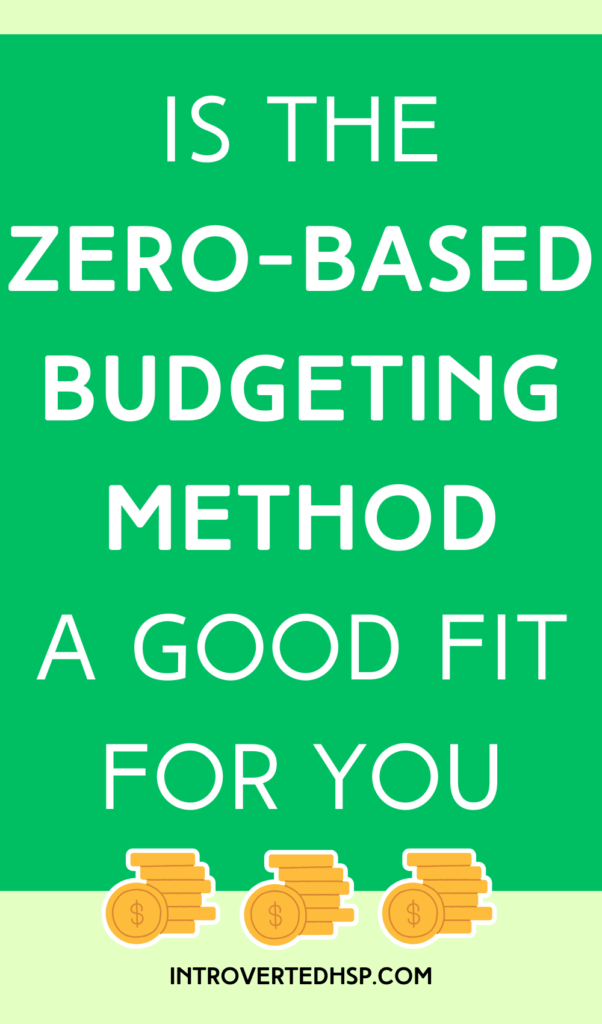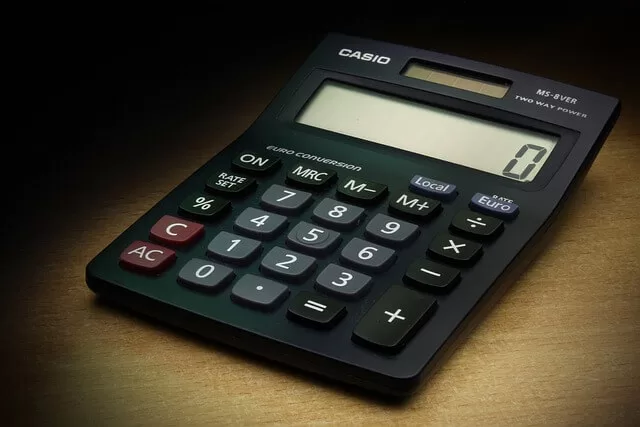When trying to find a budgeting method that works and that will help you control your finances, the zero-based budgeting method might be a good fit for you. It is found to be one of the best budgeting methods out there.
Every budgeting method is developed to let you gain control over your financial situation so obviously, the zero-based budgeting method will help you with this as well. You will get insights into how much money you are making and where all your money is going. This budgeting method is also more exact than the others and lets you start every month with a clean slate and a new budget.
To master the zero-based budgeting method, you should know the basics first and become a master by implementing this budgeting method every month over and over again. You will see that it only gets easier when you make it a habit.
Let’s start and get more control over your financial situation!

This post may contain affiliate links, which means if you make a purchase through these links, I may receive a small commission at no extra cost to you. As an Amazon Associate I earn from qualifying purchases. Please read my disclosure for more info.
What is zero-based budgeting?
Zero-based budgeting is a budgeting technique that is all about ending your monthly money balance at zero. You will give every dollar or penny that is coming in a job that it has to do and when it doesn’t have a job at the end of the month, you assign it one.
With this zero-based budgeting technique, you will make sure that all of your money that comes in every month is getting assigned to a spending or savings category.
Zero-based budgeting is a great way to control your finances and it will help you start to explore finding your path to financial freedom. When you know where your money is going and actively try to save money, you can create goals for yourself that will get you to your financial independence.
How to practice zero-based budgeting
Start with your INCOME

For every budgeting method you need to start with knowing and understanding your income and with your income, I mean every penny that you are receiving from somewhere. Your money can come from a job, a side hustle, a passive income, etc. You can receive money on a monthly or more frequent basis.
This income can be the same or vary every month depending on your situation. Most self-employed people or freelancers will have a changing income every single month whilst employees often receive the same amount of money every month if they have no side hustles or passive income that is.
Other things like child support or interests and dividends (dividends maybe not if you reinvest them instead of taking them out of your brokerage account), rental income, etc. also need to be added up to your main source of income that will most likely be your job. This way, you will know the total amount of money coming in per month. It’s okay if it’s different every single month because, for this budgeting technique, you will start over every month.
Spending and saving
When you know how much money you can use for the upcoming month, you can start dividing all of it into spending and savings categories. Create a budget for every single category that you feel you need in your life.
Spending

You always start with the big fixed costs and bills that you have every single month. Think of your rent or mortgage payments, utilities, transportation, and maybe car loans or debt payments. As you know exactly how much these things cost, you set aside that amount of money for them in your budget. Deduct it from your total income.
Then there are more variable expenses like groceries, medication, leisure time expenses, childcare, gifts, etc. These things are more difficult to budget for but give it your best estimate. It might help to track your expenses for a few months to have an idea of how much money you spend on each category and what kind of categories you need. When you have a good estimate, set aside that money for each category.
When you have spent all of your money from one category and need more money to get to the end of the month, for example for your groceries, you can shuffle a bit and move money from another category to the groceries category for this example. However, it is important that you don’t do this mindlessly and that you can still finish the month with a zero balance instead of going into debt.
If you go into debt or don’t have enough money at the end of the month, you might need to look at your spending and look for expenses that you can shrink a little or even cut.
On the other end, you might have some money left over by the end of the month, this is so good for you! Now you can put some more money into your savings funds and make some progress in with your financial goals. Awesome!
Saving

So every month you will have lots of things that you need and want to spend your money on, but you also have to think about saving money. Try to not spend all your money if you want to reach your financial goals and maybe even your life goals where you need money to reach them.
I wrote a blog post about sinking funds, these are savings categories to help you save money for different kinds of occasions. From fun savings, like saving for your wedding or a new laptop to not-so-fun savings like saving for retirement or healthcare. Check it out if you need some inspiration for saving categories.
With the zero-based budgeting method, you will assign a purpose to every penny so this can help you reach your financial goals faster if you assign them to some savings categories.
The emergency fund is the most urgent savings category that exists and that everyone should have! Start building one today by setting aside some money for it every single month until you reach the total amount of money you think you need for this. You can find more information about building an emergency fund in my blog post about it.
There are so many great financial goals like buying a house for yourself or your family, having set aside enough money so that you can feel financially secure when you retire, and an emergency fund that will support you in the times that you need it the most. Start working on them!
Start over every single month
You will try to end each month with no money left to spend as you put every penny away somewhere. This way, you will start over every single month again.
You can change your savings goals depending on which month of the year you are, for example, the holiday months are more expensive, so you will probably be able to save less these months and that’s okay. Don’t get discouraged!
Set your goals and be reminded of them every month again. Change things up as you need to or follow along a structure that works for you.
Can zero-based budgeting be the right method for you?

As with every budgeting method, there are pros and cons for the zero-based budgeting method as well.
One of the pros of this zero-based budgeting method is that you are very much in control of your finances, you know everything that goes in and out of your bank account and think about it every single month again.
Another pro is that it is also very individualistic. Every person has a different lifestyle and because everybody is so different, it is great that you can design the zero-based budgeting method for your stage of life and the needs you have at that moment. With the 50/30/20 budgeting method, for example, you have fixed percentages of money that you follow for spending on needs, wants, and savings.
A con of the zero-based budgeting method is that it takes more time to use than some other budgeting methods.
Try it out for yourself and see if it works for you! I hope it does.
